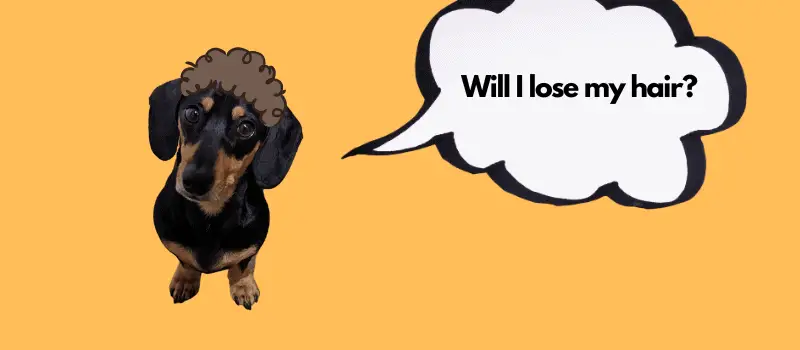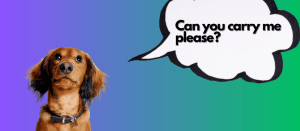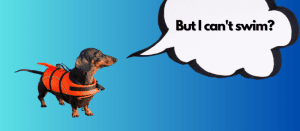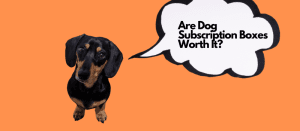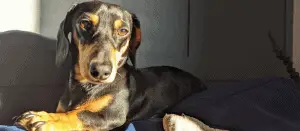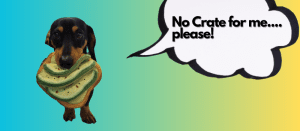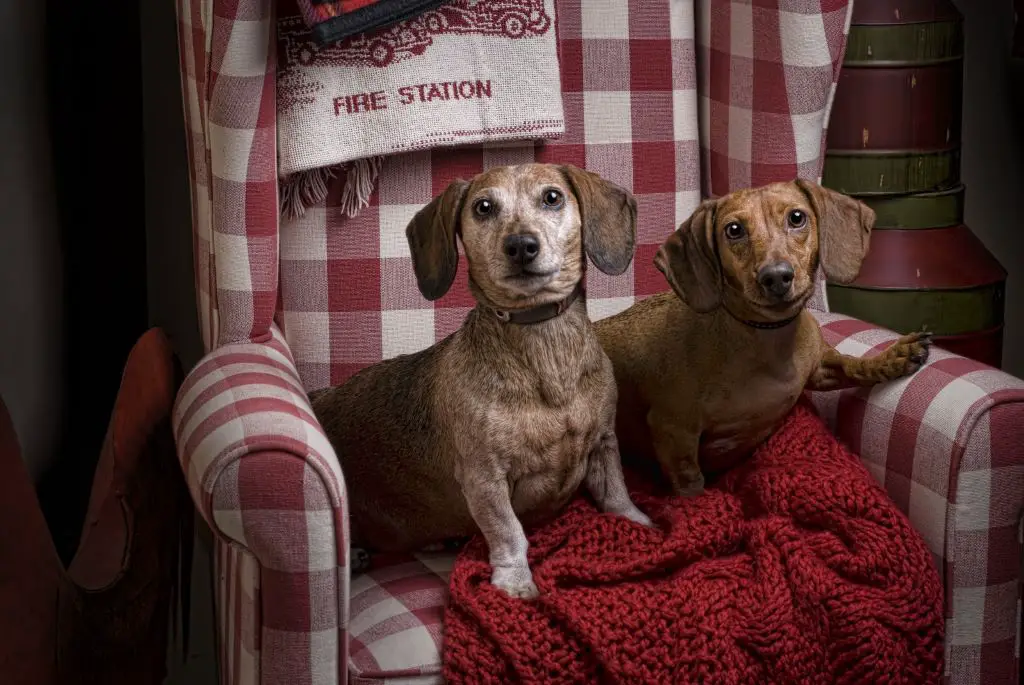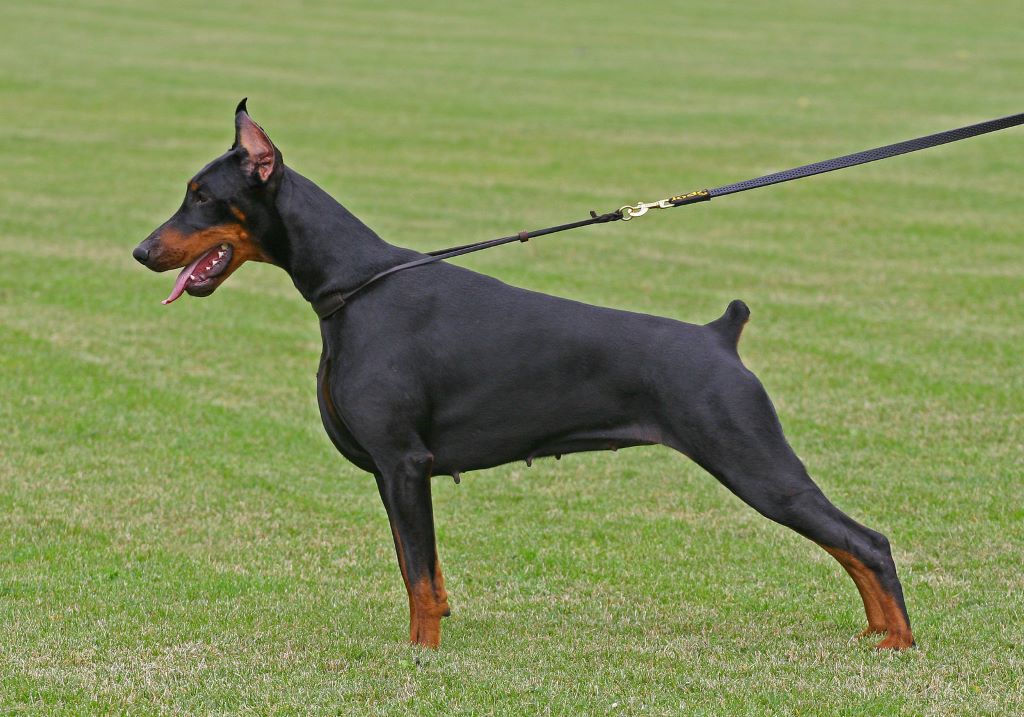Warning: Trying to access array offset on value of type bool in /home/u778996160/domains/dachshundtalk.com/public_html/wp-content/plugins/wp-word-count/public/class-wpwc-public.php on line 123
Warning: Trying to access array offset on value of type bool in /home/u778996160/domains/dachshundtalk.com/public_html/wp-content/plugins/wp-word-count/public/class-wpwc-public.php on line 123
Dachshunds are clever, active, playful pups loved across the world for their short and stout structure. Though they are not heavy shedders, it is normal to see some hair loss, particularly in the long-haired and smooth-haired varieties. However, if you notice your doxie losing huge amounts of hair with no regrowth or shedding in abnormal patches, it is something worth paying attention to.
If your Dachshund experiences abnormal ears and hair loss and starts getting bald, it is important to identify the cause and treat the problem on time. A Dachshund hair loss can be either cosmetic or attributed to a more serious underlying issue. One of the most common causes of ear and hair loss in this breed is Pinnal Alopecia.
In this guide, let us try to understand all you should know about Dachshund Alopecia, including its symptoms and effective treatment methods to help pet owners know what to expect.
Dachshund Alopecia Ears & Hair Loss – A Complete Guide
Though Dachshunds are a healthy and active breed, they are prone to certain types of diseases and ailments pet owners should be aware of. Alopecia is one of the most commonly seen problems in Dachshunds though some other dog breeds also develop this condition. It is non-inflammatory baldness affecting this breed at an early age. The onset is in the first year of life and starts with a change in skin color.
Pinnal Alopecia is a condition causing ears and hair loss in Dachshund. It refers to the baldness of the ears without any rashes and itching. The outer ears initially turn dark in color in patches and then gradually lose hair until all the hair is gone. In most cases, it starts at the age of six months to a year and gets worse until the pup gets bald at 8-9 years of age. It is, however, only a cosmetic condition that bothers the pet owner and not the dog.
Certain varieties of Dachshunds are particularly prone to developing color dilution alopecia. This genetic condition causes hair loss in blue and fawn coats. A Dachshund might have a normal hair coat as a pup but loses much of its hair by the age of three years. Though not all diluted dogs develop this condition, it is quite common in the breed. Apart from hair thinning and loss, the disease results in secondary skin infections. Your vet may prescribe supplements for skin health and antibacterial shampoos, and other products to deal with the infection.
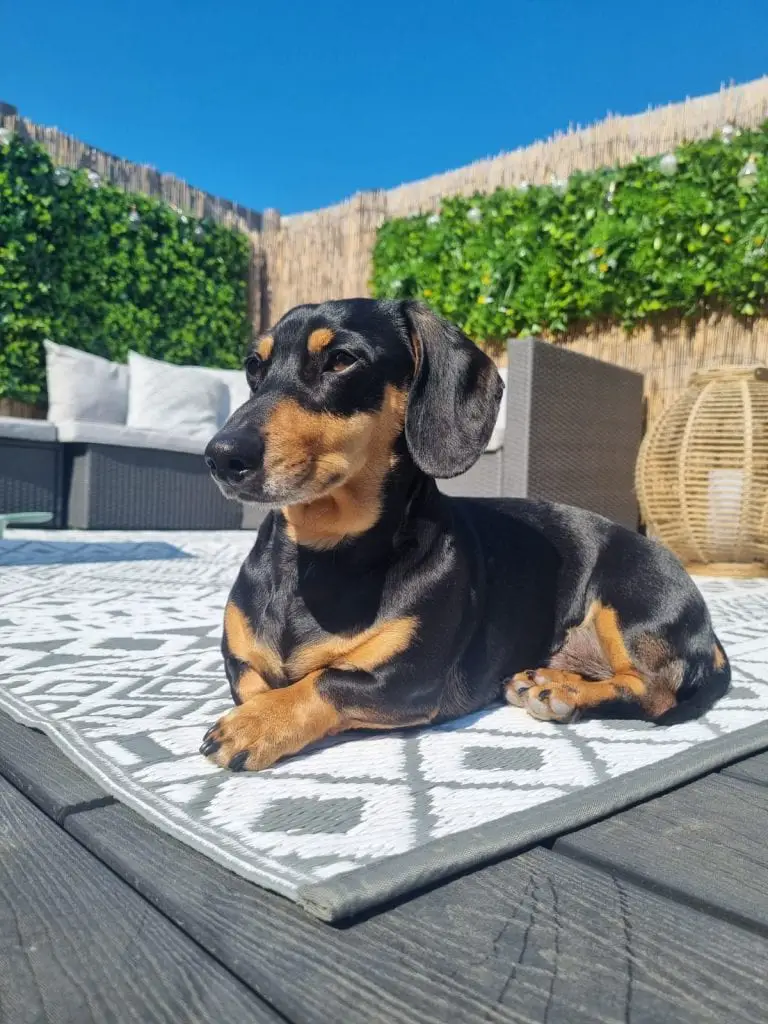
Unlock Better Skin & Joint Health For Your Dachshund
Pinnal Alopecia in Dachshund – What You Should Know
Dachshunds are prone to pinnal alopecia which is also called the hereditary pattern baldness. These pups start losing hair on the outer ears and eventually from the entire body. The dog loses all the hair by the time it reaches its middle age. The skin darkens either in patches or completely. The condition generally has no other side effects and the quality of life of the affected pup doesn’t get impacted in any way. However, it is important to confirm the condition with the assistance of a vet to avoid any complications.
The signs and symptoms of Pinnal Alopecia in Dachshund can be either mild and gradual or sudden and severe. Many pet owners don’t notice the signs until the pup has lost all the hair from the ears. With this condition, there is no redness or inflammation, and the pet does not notice any other health problem. While the exact cause of the condition is not known, it is said to be hereditary in Dachshunds and other breeds like Miniature Poodles, Chihuahuas, Italian Greyhounds, and others.
The veterinarian conducts a thorough physical examination of your dog and pays special attention to the skin and hair on the outer ear to rule out the conditions. To diagnose Pinnal Alopecia, the vet will also require the pup’s complete medical history, current conditions, and medications. The doctor is likely to advise getting the pet’s skin scrape tested with histopathology and pinnal secretions evaluated microscopically.
To ensure that the pet doesn’t suffer from any other serious ailment, the vet also advises laboratory tests like imaging, blood tests, fecal examination, and urinalysis. It is important to rule out conditions like ear ticks, allergies, dermatitis of the ear, Seborrhea, and hair follicle dysplasia. Another most common cause of hair loss in Dachshund is hypothyroidism which affects elderly pups and causes symptoms like lethargy and weight gain in addition to hair loss.
Understanding Dachshund Pinnal Alopecia & Hair Loss Treatment
Pinnal Alopecia in Dachshund pups generally doesn’t cause any pain, discomfort, or itching, but most pet owners prefer to treat the condition. It is important to get the dog examined carefully to determine the exact cause of the disease and the right treatment plan. While some natural home remedies are known to be effective, parents should consult the vet before using human products as they can be toxic at times.
Pinnal Alopecia usually affects the pet owner more than the pup. As the condition causes no itching and pain, there is no need for treatment. However, if you decide to get your canine treated, make sure you consult the vet for a prescription and follow up regularly for evaluation. Some practitioners suggest the use of hormones to induce hair growth.
Testosterone
Your vet may sometimes approve a small dosage of testosterone for male dogs to stimulate hair regrowth. Many vets don’t agree to these steroids taking into consideration their adverse effects. Though effective, testosterone is generally not prescribed as the condition causes no harm or pain to the dog. The vet may instead suggest using melatonin.
Melatonin
The most common treatment method for Alopecia hair loss is to give 5mg of melatonin supplement orally for 4-6 weeks. However, there is no clear evidence available on the effectiveness of this treatment.
Final Thoughts
Ear and hair loss from Alopecia is a common condition affecting Dachshunds but requires a vet consultation to rule out other diseases of the outer ear. Dachshund Alopecia is often a cosmetic problem bothering pet owners and doesn’t affect the pup’s quality of life, and can be left untreated. However, if you are looking for ways to stop hair loss or stimulate hair growth, it is best to ask your vet for safe treatment options.

